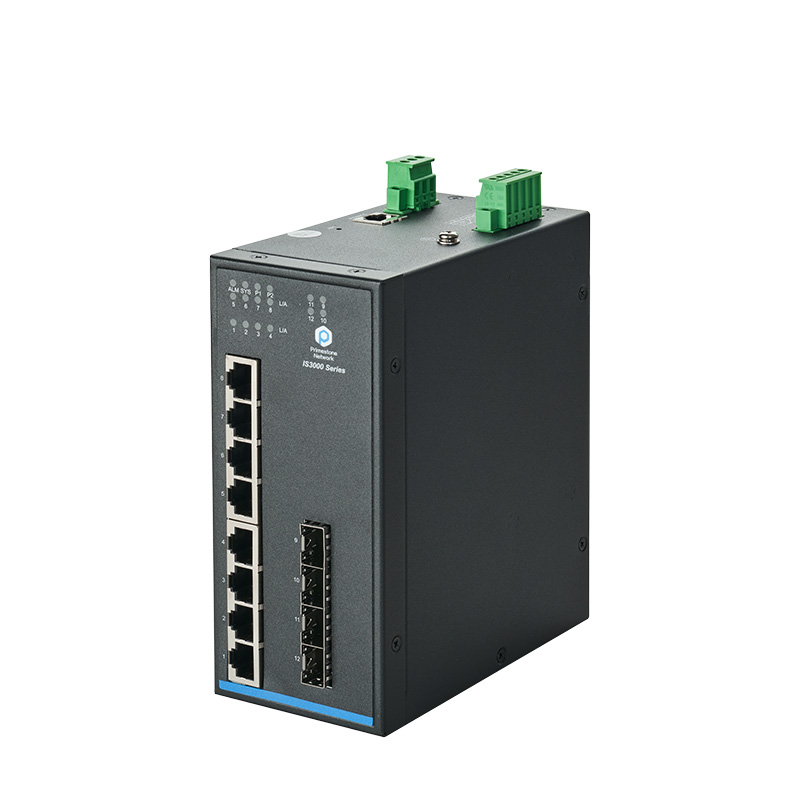The power and management functions of Industrial Switches can vary depending on specific product models and specifications and functions provided by manufacturers. Here are some common industrial switch power and management functions:
Power:
Power supply method: Industrial switches usually support multiple power supply methods, including AC power supply, DC power supply, POE (Power over Ethernet), etc. Different power supply methods can be selected according to the actual situation to meet the needs of different scenarios.
Power supply capacity: The power supply capacity of industrial switches depends on their design and specifications. Generally speaking, industrial switching opportunities provide multiple power supply ports to support the power supply needs of connected devices. These power supply ports typically comply with POE standards such as IEEE 802.3af/at and can provide appropriate power transmission.
Power consumption: The power consumption of industrial switches depends on their design and operating status. Modern industrial switches typically have energy-saving designs, using low-power processors, energy-saving modes, and automatic port management functions to reduce power consumption and improve energy efficiency.
Nowadays, most industrial poe switches on the market comply with the IEEE 802.3af standard, providing the highest of 30 watts (W) per port. However, power consuming devices are often connected to industrial switches, such as network cameras, wireless access bridges, routers, network video phones, and large screen displays. As a result, more and more industrial POE switches are adapting to the IEEE802.3at standard, providing dual power at 30W per port.
Generally speaking, the selection of power is determined by the required transmission distance and usage environment of the switch. If long-distance transmission is required or used in harsh environments, it is usually necessary to choose a switch with higher power.

Management functions:
Remote management: Industrial switches usually support remote management functions and can remotely manage and monitor the operation status of switches through the network. The remote management function can greatly simplify the process of device management and troubleshooting, and improve the efficiency of network operation and maintenance.
VLAN support: Industrial switches usually support the VLAN (VLAN) function, which can divide the network into multiple independent virtual networks to increase network security and flexibility.
QoS support: Industrial switches typically support Quality of Service (QoS) functionality, which can be optimized and scheduled based on the priority and importance of data packets to ensure high reliability and responsiveness in the transmission and processing of critical data.
IGMP Snooping (Internet Group Management Protocol): Under normal circumstances, the switch broadcasts multicast traffic to support many hosts in the network. Through IGMP Snooping, the switch can optimize the processing of multicast traffic based on host requests.
Security Function: Industrial switches typically provide multiple security functions, such as port based access control, MAC address filtering, traffic isolation, etc., to protect the network from unauthorized access and attacks.
SNMP (Simple Network Management Protocol): Through the SNMP management interface, functions such as traffic and error monitoring, configuration changes, and report generation can be achieved, enabling remote management of switches.
RSTP (Fast Restricted Tree Protocol): enables faster data flow in network segments while preserving redundancy in the network, while also being compatible with the STP protocol.
DHCP authentication, authorization, and billing: Users can be authenticated, authorized, and billed on the network, and can be used in public WiFi and other scenarios.
Network monitoring and troubleshooting: Industrial switches usually provide Network monitoring and troubleshooting functions to help administrators identify and solve network problems by monitoring network traffic, abnormal events and fault status.
It should be noted that the specific power and management functions may vary depending on different industrial switches. When choosing to purchase industrial switches, you can choose products that meet the requirements based on actual needs and application scenarios, and check the technical specifications and functional descriptions provided by the manufacturer to ensure that they meet your own needs.
Contact: sales
Phone: 18688787693
E-mail: sales@hsindustrialswitch.com
Add: Room 608, Building B,GaoXinQi TEC Park,Baoan District, ShenZhen,China